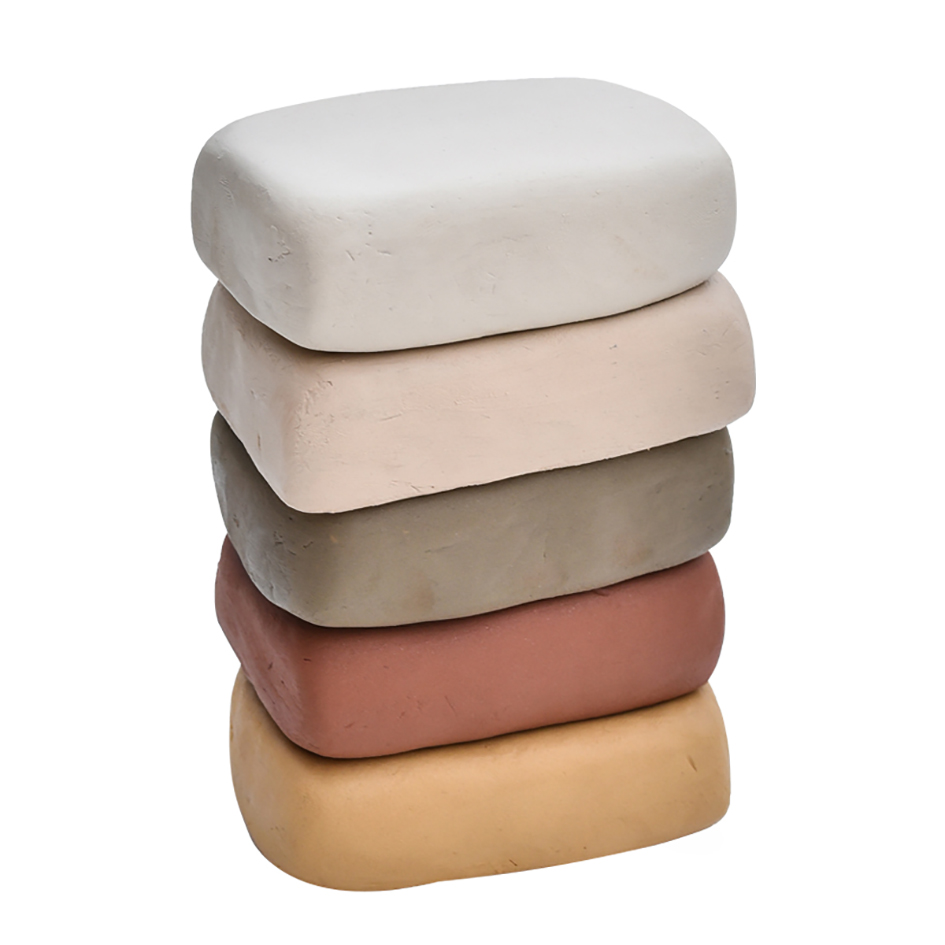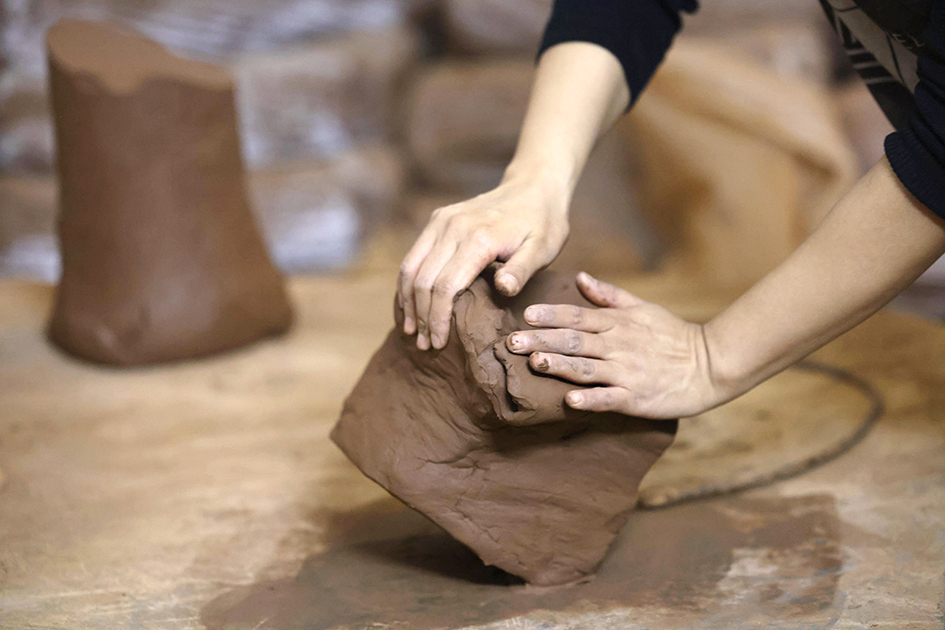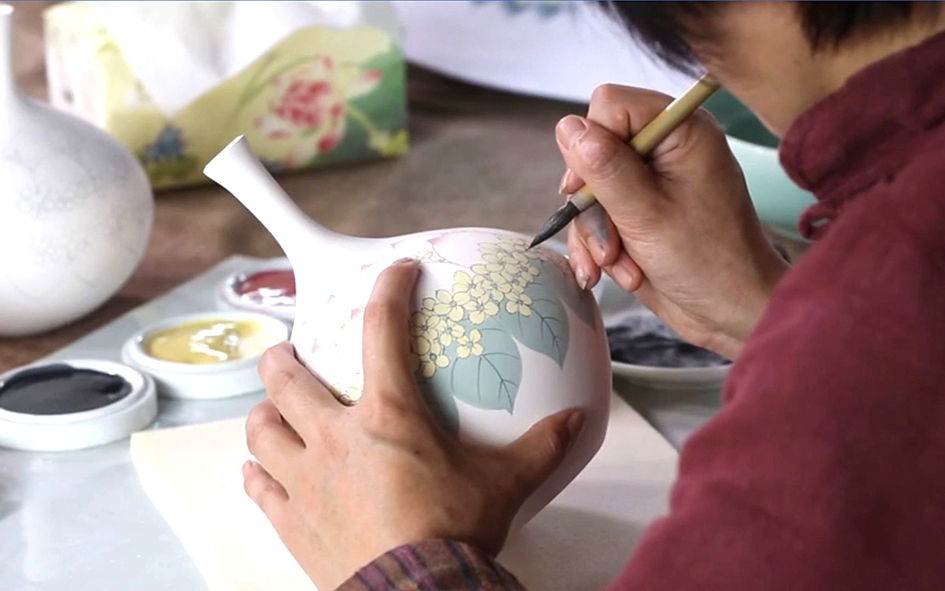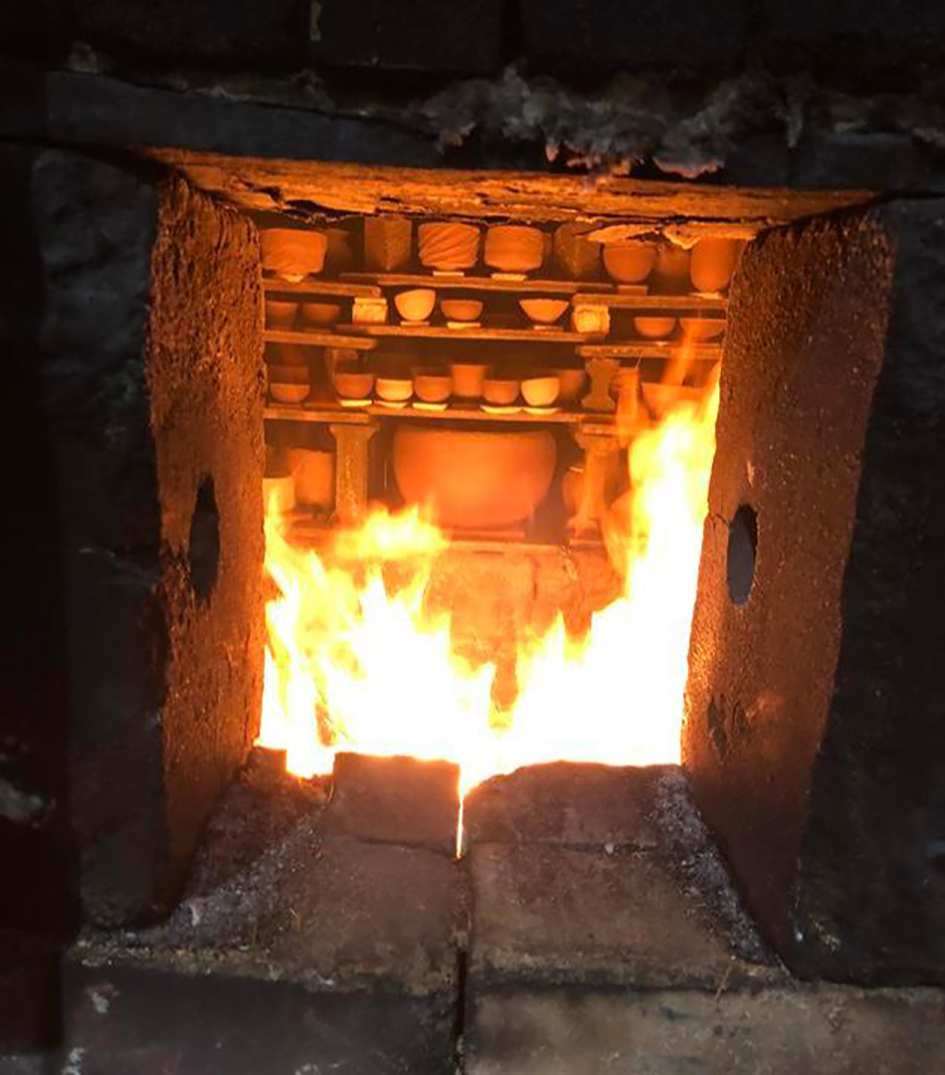As an ancient and fascinating form, ceramic art relies on three key elements which include clay, pigments and firing techniques. These elements work in harmony to endow ceramic works with unique charm.
The Selection and Preparation of Clay

The clay is the cornerstone of ceramic creation, with different types boasting unique properties and applications. Coarse clay, characterized by its rough texture and pronounced granularity, is well-suited for crafting works that exude an antique and natural charm, such as traditional flowerpots and water vats. Fine clay is smooth and delicate with excellent plasticity so that it can meet the needs of complex shapes. It is often used for delicate tea sets and ornaments. Porcelain, known for its high whiteness and transparency, is the ideal material for high-end porcelains.

Before artists use the clay, kneading is an essential step. Air bubbles in the clay can be expelled by repeatedly kneading, slamming and pinching, which makes the texture more uniform. This step can prevent works from cracking due to air expansion during firing. The kneaded clay should be moderately soft. The clay that is too hard will be difficult to shape, while the clay that is too soft tends to deform easily.
The Application and Matching of Pigments

Pigments add rich colors and unique artistic effects to ceramic works. Ceramic pigments are divided into overglaze decoration, inglaze decoration and underglaze decoration. Overglaze decoration involves applying paint to the surface of fired ceramics and then fixing it with low-temperature firing.They are bright but relatively less wear-resistant. Inglaze decoration entails drawing on glazed bodies, which are subsequently covered with a layer of transparent glaze and fired at high temperatures. The pigments become integrated into the glaze, yielding soft colors and ensuring high safety. Underglaze decoration involves applying paint directly to the unfired clay body before glazing and high-temperature firing. Shielded by the glaze layer, the decorations are highly resistant to wear and fading, thus they possess relatively high artistic value.
When selecting pigments, artists must consider their compatibility with clay and firing processes. Additionally, reasonable color matching is crucial. Contrasting colors (e.g., red and green, yellow and purple) can create a strong visual impact. Adjacent colors (e.g., blue and green, orange and yellow) can produce a harmonious and soft effect. Besides, techniques like gradient and blending can also be used to create more diverse color effects.
The Mastering of Firing Techniques

Firing is the final step as well as a key determinant of a successful work in ceramic creation. Three factors, temperature, atmosphere and time, are critical during firing.
The control of the temperature is vital. Different types of clay and pigments require different firing temperatures. Coarse clay is typically fired at 800°C–1000°C (lower temperatures).Fine clay and porcelain need higher temperatures, usually around 1200°C–1300°C.The firing process must follow a strict heating curve to avoid rapid rises or drops in temperature which may cause cracking or deformation.
Atmosphere refers to the oxidizing or reducing environment inside the kiln. An oxidizing atmosphere (with sufficient oxygen) is suitable for firing works with bright and vivid colors. A reducing atmosphere (with insufficient oxygen) causes reduction reactions in certain metal elements, producing unique colors and textures. For example, the fancy "kiln transformation" effect of Jun porcelain is formed in a reducing atmosphere.
Firing time depends on the size and thickness of the work, as well as the kiln performance. Generally, small works require less time while large ones need longer. After firing, works should cool naturally in the kiln to prevent cracking from sudden cooling.
Clay, pigments and firing techniques are interconnected. These three elements form the core of ceramic creation. Only by mastering these elements can artists create colorful and charming ceramic works.